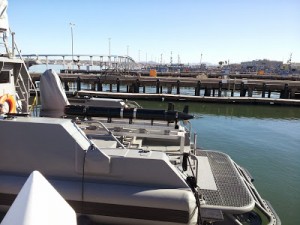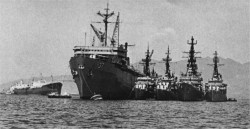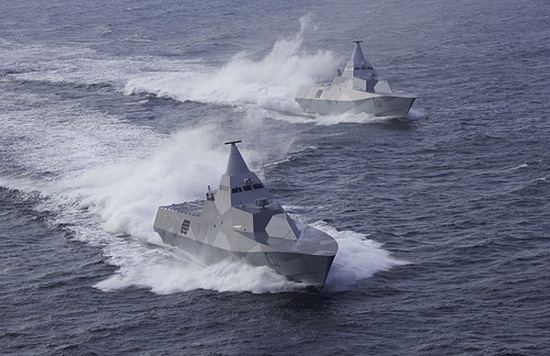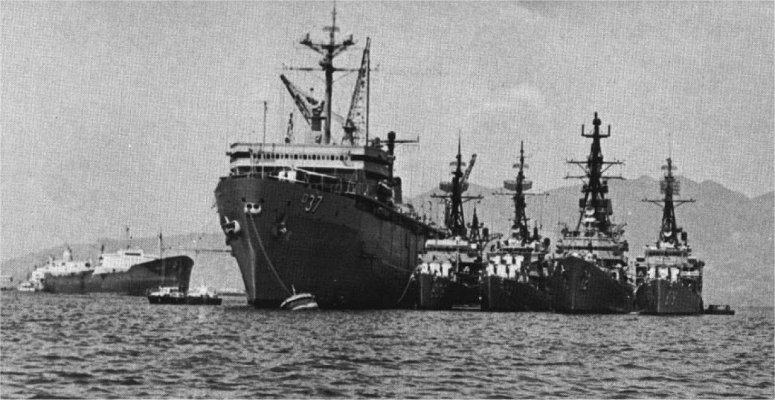You cannot force innovation. Especially in the Navy.
This truism is continually repeated, from the ATHENA Project to Navy Warfare Development Command (the Navy’s “Center” for Innovation). Yet, pushing innovation has become the cause de jour – one that has inspired a clumsy “campaign” which is heavy on rhetoric but light on substance. I have had a front row seat to this movement, from the beginning until now, where its one product – the CNO’s Rapid Innovation Cell, or CRIC – is struggling to identify itself, find relevancy, and justify funding. “What is the Navy missing?”
The Heart of the Matter
What is innovation?
Our friends at Merriam-Webster tell us that to innovate is, “to do something in a new way: to have new ideas about how something can be done.”
“Precisely,” I scream internally amongst my fellow Starbucks typists. Innovation is not just sitting around thinking stuff up – it is identifying a problem, often taking a Departure from Specifications, and coming up with a new solution, therefore making your respective process more efficient. This stands apart from, as some try to compare, the process that brought us our much beloved password keeper: the Post-it Note. While I wish to claim dictionary-supported victory, Webster continues: “To introduce as, or as if, new.” And here is the rub. What is the Navy trying to push us to do? Solve problems or think stuff up? In reality, it is both. We need to clearly distinguish between innovation, which is the act of finding a new way to solve an identified problem, and creativity, which boils down to investing in our future. “Semantics,” you say. I disagree, and I believe that this line in the sand will help organize our service’s efforts more efficiently. When it comes to my definition of innovation, the Navy is spinning its wheels. Innovation will boom when Big Navy opens its ears and shuts its mouth: it must listen, implement, and highlight successful innovations.
“Haters Gonna’ Hate”
Why tear down people trying to improve the Navy? Why do you dislike the Innovation Campaign?
These are questions I hear asked by people enamored by flashy websites and new catch-phrases like “disruptive thinkers” or “crowd-sourcing.” I do not hate innovation – I believe it has a valuable place in our Navy. I do not hate creativity – I think it has a valuable role in our future. I do dislike the Navy’s Innovation Campaign, though, because it misses the point of innovation, it blurs the line between innovation and creativity, and because the Navy is taking the wrong approach.
We do not require a bottom-up invigoration. Innovation happens where it matters most: at the source of “the problem.” It does not happen because of symposia or blog posts. It happens because our people are both creative, and selfish.

Let me explain that last point.
While some see the selfish streak as a bad thing, it is present in every person and can be harnessed. What does it mean in this context? It means that our people hate having their time wasted. They are always looking for a better answer to the problem, whether it is using red headlamps on the navigation table instead of those clunky Vietnam-era L-flashlights, or using Excel instead of R-ADM for watch bills. They are being selfish because they are looking to make their lives easier – they are being innovative because they are finding a new solution to an existing problem. Campaigns do not inspire these improvements and good deck-plate leadership can corral this so-called selfishness into constructive innovation, and steer clear of gun-decking.
“They are not going to listen anyways, so why should I do anything differently?” This brings us full circle to the Navy’s current push for innovation. The Navy wants to capture fresh ideas and the operational experience of our young leaders. To achieve this, Big Navy needs only to stop talking. No websites or outreach groups are required. If they listen, they will hear their Fleet being innovative.
This entire campaign has been a bottom-up effort, trying to rile up the young folks and get them to be more innovative. I think this is the wrong approach. The thing that squashes the natural innovation in the Fleet is an unreceptive organization. “R-ADM is the required software for watch bills. If you do not use R-ADM, you fail the inspection.” More effective Excel-based watch bills go into hiding and “clunky,” but approved, R-ADM watch bills are generated specifically for said assessment. Innovation is squashed. Other commands fail to learn the successful lessons of their waterfront counterparts because the solution was not “in accordance with.”
Many instructions are written in blood, and while we should not forget that, we should recognize that there is a way to ensure combat superiority and safety, while still applying real-world common sense. Operators in the Fleet do not need to be patronized. They just need the Navy to listen, and whenever possible, defer to the operator over dusty publications. When a good idea makes sense, operators need the Navy to implement it and promulgate it to the rest of the Fleet through every available channel – from press releases to school-house curriculums. The innovation should be made official through integration into instructions and strategic communications – highlight it, not for fame or fortune, but rather, so that a Sailor does not find the problem he just solved, a year later at his next command.
Innovation is All-Around Us
Innovation is happening in the Fleet. Many of these every-day solutions become so incorporated into a unit’s routine that they are hardly thought of as innovations – they are rarely publicized, and when they do spread, it is almost always via PCS-Pollination. These life-hacks allow us to operate more efficiently, but also ensure that we are often coloring slightly outside “the lines.” How many of these mini-innovations have become standard issue, or have been deemed to be, “in accordance with?” Everyone knows that these gems are out there. Yet, they stay at the unit level – effective little outlaws, getting the job done, but waiting to sabotage the checklists of your next INSURV. What is the Navy missing?
Have you ever heard of the Combat iPad? Unless you are a regular reader of the Disruptive Thinkers blog or a Marine Corps Cobra pilot, you might have missed it. This is the greatest innovation success story in recent years. Imagine being confined in a tiny cockpit, racing around a mountainous combat zone, expected to differentiate between the guys in tan clothing from the guys in khaki clothing, holding numerous lives in your hands, and trying to find your way by sorting through ONE-THOUSAND pages of charts in your lap. As a proud former navigator, this sounded ridiculous to me. This was the reality, though, for Cobra crews in Afghanistan – the folks we expect precision close air support out of every time. A Marine Captain decided to change the game and proved that yes, there is an App for this. From the article,
“Of his own initiative and without official Marine Corps support, Captain Carlson provided his aging aircraft with a navigational system as advanced any available in the civilian world. This leap in capability cost less than $1000 per aircraft. Remarkably, an entire Marine Corps Cobra squadron can now be outfitted with iPads for less than the cost of fuel for one day of combat operations in Afghanistan.”
Here is battlefield innovation – no campaign required. This meets most of the wickets laid out earlier: the Marine Corps listened and they implemented, but how well did they highlight this successful innovation? The target audience is the entire Corps; they need to know that their leadership will listen and take action when sensible solutions rise to the surface.
Another mark in the win-column is the improved watch bill and daily routine spearheaded by the Captain and crew of SAN JACINTO. One of the most well-known parts of being a surface Sailor is being constantly exhausted. Exhausted to your core. Scientifically drunk with exhaustion. I myself have two friendly sets of binos KIA on my record from falling (asleep) from a standing position. Whereas I was once expected to launch helicopters “drunk” in the middle of the night, as I return to sea, I will now be expected to potentially launch missiles “drunk” in the middle of the night. The folks aboard SAN JAC worked together to find a solution to this identified problem and came up with a 3-on, 9-off routine. This approach meets the initial definition of innovation. It was a new way of doing business, both safer and more effectively. Community leadership liked it, and promulgated it – not as a mandate, but rather, as an innovative solution that could be implemented (with the underlying tone being, “We don’t want drunk watch standers”), and highlighted it through press releases, message traffic, and direct TYCOM action. Bravo. Innovation.
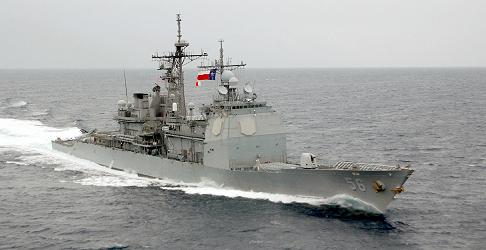
So innovation is out there. Big Navy just has to listen.
Where Do We Go from Here?
We need a receptive culture, not a fancy campaign. We do not need hollow initiatives from on high, but rather, we need the Navy to let us do our jobs. When we come up with better ways to do our jobs, we need the Navy to have our back. We do not have money to waste. We must take an approach to our expenses that defers to operational forces – ships, subs, aircraft, and their associated operators – with a balanced approach to “investing in creativity.” It would be irresponsible to ignore the future and the ideas of our more creative junior people, but it is also irresponsible to spend vast sums on them to sit around and think stuff up. This is where I think we need to differentiate between our approach to innovation, and our approach to fostering creativity.
Innovation will continue to happen, no matter what I or anyone else thinks or does about it. People are always going to find an easier way. So what do we need from the Navy? We need a culture that expects leaders to consider the insight of the doers. This improved culture does not need to be whiz-bang or flashy. As efforts such as ColabLab and MMOWGLI and RAD have sputtered over the past year, Sailors continued to innovate in the Fleet. Our Marine pilot and ship Captain did not look to a website for “likes.” They had a problem identified and they endeavored – they innovated – to fix it. Innovation – the act of solving problems with new ideas – should have minimal organizational involvement until the implementation stage. The culture, which will take time to establish, should provide a direct conduit from the operator to the command that makes the applicable decisions. No middle man or think tank, but rather decision makers – like the TYCOMs – clearly demonstrating that they want to hear the innovative solutions coming from the Fleet and that they will personally take action to implement those that make our Navy better.

Investing in creativity is more complicated. A rudimentary look at the budget shows us that, in general, new money is not budgeted, but rather, re-allocated. In other words, if our budget is (for simple argument) $1 billion, it does not become $1 billion + x to help us fund our creative thinkers. Rather, “x” is taken from Program Y to fund said creative thinkers. The question, from The Girl Next Door, becomes, “Is the Juice Worth the Squeeze?” Are the creative thinkers more important than Fleet Experimentation, or “pick your project/funding line?” What is our tolerance for failure? How can we capture the operational experience of our junior-leaders unseen for the past 40 years? The Navy should encourage and facilitate creativity. The CRIC was a good start. It commenced the tearing down of stovepipes amongst junior leaders and got free-radicals thinking of ideas that grey-beards would never come up with. As a way ahead, we need to clarify the group’s mission and get them focused on creativity. The group, which is currently disaggregated, would evolve into a directorate made up of young, seasoned “egg heads” who would be incorporated into an existing command. With an infrastructure and existing budgets, as well as the requisite people to provide support and continuity with an assortment of know-how (all things they lack now), this organization – the Young Leaders Creativity Cell (Y-LCC) – will become the receptacle for new ideas still in need of development flowing in from around the Navy and an incubator for creativity in our service. Creativity – tomorrow’s next “Post-It Note” – may help us win the next war. It takes time, though, and requires a tolerance for failure, which necessitates a separate approach from innovation.
In the end, I may be arguing over the semantics between the terms innovation and creativity. I want to see the Navy take a hands-off approach to innovation – letting it happen and then supporting and highlighting it. And instead of ill-defined movements, I would like to see young leaders brought into the fold of existing top-heavy organizations (ONR, NWDC, SSG, DARPA, WCOE’s), enabling them to affect their creative – and possibly innovative – ideas from within. And most importantly, I would like to see creative and innovative minds continue to blossom outside of the Navy umbrella, where I think they will continue to make the greatest advances. As the co-founder of the Defense Entrepreneurs Forum, LT Ben Kohlmann pointed out to me,
“…Skunk Works only worked because it broke every rule in the book regarding traditional R&D, only accountable to the CEO of Lockheed. It could not have functioned within the standard (DOD) institutional structure.”
If we want the next Skunk Works or Post-It note or iPhone, we must encourage the participation in such extra-curricular groups as the ATHENA Project, Disruptive Thinkers, CRIC(x), and the Defense Entrepreneurs Forum – exposing our most fertile minds to different perspectives and making these junior officers more effective leaders and innovators in the Fleet, where it matters most.
LT Jon Paris is a 2005 graduate of The Citadel and a Surface Warfare Officer. He has served aboard destroyers and cruisers, as a navigation instructor, and is currently a Flag Aide in Norfolk, Virginia. His opinions are his own and do not reflect those of the Navy or his current command.



